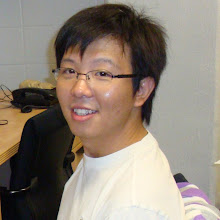I firmly believe Nature should consider publishing (or
re-publishing, who cares) this article considering their taste shown on
their recently publication of "Why great Olympic feats raise suspicions".
Dear readers, if you like it, please send it around and/or leave comment to support this protest-against-Nature effort. Thank you!
Update: Nature has already apologized. Although I'm not buying it completely (some key points were glossed over), it ended better than I have thought -- kudos to Nature for acknowledging their mistake.
Here's a blog that, to use Dan Patrick's words, goes to the next level on this issue. Check it out.
Also, thank you Adam for pointing out a typo in the text!
Update: Nature has already apologized. Although I'm not buying it completely (some key points were glossed over), it ended better than I have thought -- kudos to Nature for acknowledging their mistake.
Here's a blog that, to use Dan Patrick's words, goes to the next level on this issue. Check it out.
Also, thank you Adam for pointing out a typo in the text!
Extraordinary Achievement by an American Swimmer May Be Due to Arsenic in His DNA
Ar U. Kiddingmi1 and Shamon Neighcher1
1World Unsound Allegation Association.
The physical and physiological limitations of human
athleticism are of great interest for both scientific and sociological
reasons. An efficient method to
test such limitations is having human participants compete in sports such as
those included in the Olympic Game.
Recently American swimmer Michael Phelps showed extraordinary
athleticism in the Olympic Game, winning over 20 medals among which 16 are
gold. This greatness has never
been achieved before and therefore is highly likely due to factors other than
training, which all previous athletes have undergone. This seemingly impossible achievement is reminiscent of the
robust growth of the recently discovered bacteria GFAJ-1 in arsenic-rich
media. Since the existence of arsenic in the DNA of GFAJ-1 has not been conclusively disproved, it is reasonable
to assume, or at least to suspect, that the DNA of GFAJ-1 contains arsenic. Similarly, we propose
that part of the DNA of Michael Phelps consists of arsenic, and that this
element strongly contributed to his success. Although our theory has no evidence, it nevertheless
cannot be ruled out. Our finding
illustrates an exciting opportunity to enhance the athleticism among humans,
although safety and ethic issues should be fully addressed prior to its worldwide
application.
